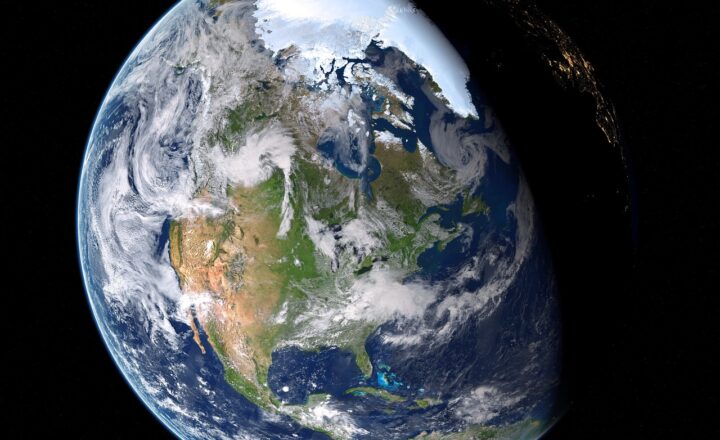The Role of Mathematics in Predicting Weather Patterns and Natural Events
November 12, 2024

Weather prediction is a complex science that relies heavily on mathematical models and computations. These mathematical principles enable meteorologists to analyze vast amounts of data, make sense of dynamic atmospheric conditions, and offer forecasts that can ultimately save lives and property. In this article, we will explore the fundamental mathematics involved in weather prediction, its historical development, and its critical role in modern meteorology.
1. Understanding Weather Forecasting
Weather forecasting is the process of predicting the state of the atmosphere at a specific location over a given period. This requires collecting data from various sources, including weather stations, satellites, and radar systems. The predictions range from short-term forecasts that span days to long-range forecasts that can extend weeks and months into the future.
The core of weather forecasting lies in mathematics and statistics. For example, meteorologists use mathematical models to interpret observational data and simulate the physical processes governing the atmosphere. The accuracy of these forecasts often hinges on the sophisticated mathematical operations performed during this process.
2. Mathematical Models in Meteorology
At the heart of weather prediction are mathematical models, which are mathematical formulations that describe the behaviors of atmospheric phenomena. These models can be simple algebraic equations or complex systems involving calculus, differential equations, and statistical methods.
Some of the most commonly used mathematical models include:
- Numerical Weather Prediction (NWP): This technique involves using numerical methods to solve the equations of fluid dynamics and thermodynamics. By evaluating the atmosphere’s behavior at different altitudes, NWP creates simulations of future weather conditions based on current data.
- Statistical Weather Models: These models analyze historical weather patterns to identify trends that can inform future forecasts. Regression analysis, time series analysis, and other statistical methods are employed to establish correlations between different weather variables.
- Machine Learning Models: Recent advancements have introduced machine learning techniques into meteorology, allowing models to learn from vast datasets and improve predictions over time. These algorithms can handle complex nonlinear relationships in atmospheric data that traditional methods might overlook.
Through these mathematical models, meteorologists gain insights into how atmospheric variables interact, allowing them to make more accurate predictions about future conditions.
3. The Importance of Differential Equations
Differential equations are one of the most significant mathematical tools used in weather prediction. These equations describe how changes in one quantity relate to changes in another, making them essential for modeling dynamic systems like the atmosphere.
For example, the Navier-Stokes equation describes the motion of fluid substances. In meteorology, it helps model the flow of air and water vapors in the atmosphere, predicting the movement of weather systems like cyclones and anticyclones.
Mathematical modeling using differential equations enables meteorologists to simulate the behavior of atmospheric systems, making it possible to forecast weather conditions like precipitation, temperature variations, and wind patterns.
4. Data Assimilation Techniques
Data assimilation is a mathematical approach used to integrate real-time data from multiple sources into weather prediction models. This process enhances the accuracy of forecasts by ensuring that models start from a realistic initial state based on actual weather conditions.
Mathematical techniques involved in data assimilation include:
- Kalman Filtering: This statistical algorithm helps estimate the state of a dynamic system from a series of incomplete and noisy observations. In meteorology, Kalman filters are used to update prediction models based on new data, refining forecasts in real-time.
- Variational Methods: These methods involve finding an optimum state of a physical system by minimizing the difference between observed data and model predictions. This is crucial for ensuring that models accurately reflect current atmospheric conditions.
The application of data assimilation techniques is essential for producing reliable and timely weather forecasts, increasing the value of mathematical models in meteorology.
5. The Role of Mathematics in Natural Hazard Predictions
Mathematics also plays a critical role in predicting natural events and hazards like hurricanes, floods, and earthquakes. By utilizing mathematical modeling and statistical analysis, meteorologists and scientists can assess potential threats and engineer risk mitigation strategies.
For example:
- Hurricane Forecasting: Advanced mathematical models simulate hurricane formations, track their paths, and predict their intensities, ultimately leading to timely evacuations and preemptive actions to safeguard communities.
- Flood Modeling: Hydrological models apply mathematical principles to estimate how much rainfall a specific area can absorb before flooding occurs, helping planners manage and fortify infrastructure to withstand extreme weather conditions.
- Earthquake Analysis: While not directly a weather phenomenon, mathematical models are invaluable for assessing seismic risks, analyzing ground movement, and establishing earthquake preparedness measures to protect life and property.
Mathematics is integral to natural hazard prediction; by applying mathematical theories and models, scientists can bolster preparedness and reduce risks associated with these potentially catastrophic events.
6. The Future of Mathematics in Weather Prediction
As technology progresses and data becomes more abundant, the role of mathematics in weather prediction will only expand. With innovations in supercomputers and machine learning, meteorologists will enhance their models to provide even more accurate forecasts in real-time.
These advances will lead to:
- Improved Grid Resolution: More powerful computational models will allow for higher grid resolution, enabling predictions to provide localized weather information accurately.
- Incorporation of Big Data: The ability to analyze extensive datasets—such as satellite imagery and real-time sensor data—will refine predictions and enhance model accuracy even further.
- Advanced Predictive Algorithms: Machine learning and AI algorithms will evolve to identify patterns within complex data that traditional models may miss, leading to groundbreaking advancements in meteorological science.
The future of weather forecasting will rely on mathematics’ ability to adapt and innovate, further solidifying its importance in predicting and understanding our planet’s atmospheric dynamics.
Conclusion
Mathematics is at the very core of weather prediction and natural event forecasting. Through the application of mathematical models, differential equations, data assimilation, and machine learning, meteorologists can provide accurate forecasts that help protect lives and property. As technology advances, so too will the methodologies employed, ensuring that mathematics continues to play an indispensable role in understanding and predicting the complexities of our atmosphere.
By embracing the dynamic interplay between mathematics and meteorology, society can improve disaster preparedness, enhance safety measures, and foster resilience in the face of environmental challenges. Mathematics is not just a tool for forecasts; it is a pathway to understanding our world and navigating an unpredictable future.








